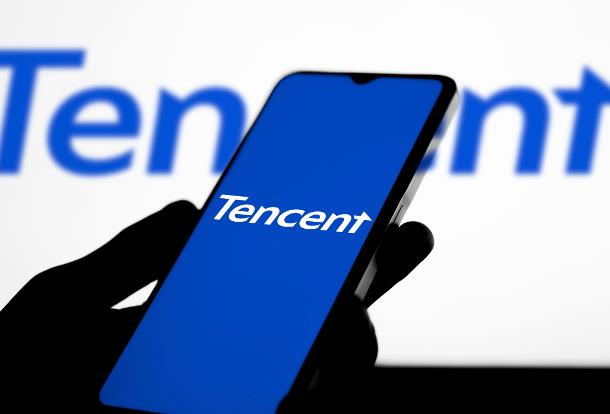ChinaTravelNews, Ritesh Gupta - The efficacy of reaching out to travelers during various stages of the travel booking funnel and managing media expenditure in non-Chinese markets doesn’t necessarily equate to optimizing the digital media mix in China.
5 areas that foreign travel marketers need to delve into:
1. Is it possible to go beyond one ecosystem?
A majority of foreign travel brands are sticking to one ecosystem where travelers are being offered a touchpoint for their requirements across the entire journey of trip planning, booking and the consumption phase. Shouldn’t brands be showing ingenuity with their media buying or the content/ ads they create? Not an easy task considering that top 10 mobile apps by monthly active users - WeChat, QQ, Alipay, Taobao, iQiyi, Tencent Video, Baidu search, Weibo, Youku, and QQ Browser - all have a sizable user base. Other options include travel-related apps such as Qyer and Mafengwo, as well as live streaming and video platforms such as Douyin. And when one considers that on average a Chinese mobile user installed 42 apps in the first quarter, according to China Internet Watch, it is clear that dealing with fragmentation is an uphill task.
“It (sticking to one ecosystem) does sound like a defensive strategy but if one evaluates what it takes to start a new sales channel on a predominantly e-commerce platform (Alibaba) or even on WeChat, which is going deeper into the booking funnel (to facilitate bookings), activating storefronts or managing official accounts is just the beginning. These platforms are so dynamic and new (in the marketplace), the best way is to go steadily at this juncture,” shared an executive, representing a foreign company.
“Also, with limited view of what happens to the activity of a user within one ecosystem means we can’t take that data out and use it for other channels that aren’t part of that ecosystem. So if you exploring a hotel in Tencent and next you search on Baidu or Fliggy for a deal, can a retargeted ad be served? Not really. So this makes the probability of spending more marketing budget with one ecosystem higher.”
A senior ad industry executive in China mentioned that such complexities associated with marketing and sales can’t be ignored, but even brands with relatively higher budgets have till date succumbed to tried and tested ways of media planning and buying. “The tendency to only look at the conversion rate means travel brands are ignoring the popularity of an app like Douyin for brand building.” The executive added, “The conundrum of how much to spend on brand building and how much to allocate for conversion across so many channels can hold back travel advertisers, but there is always an opportunity to inspire and be with consumers where time is being spent even where there is no call to action.”
George Cao, Co-founder/CEO, Dragon Trail Interactive mentioned that a lot depends upon the objective and the budget of a travel advertiser. The campaign could be focusing solely on conversion versus being a part of the inspirational stage/ or creating brand awareness campaign. “Even with this (complex) media landscape, the basic principles of advertising don’t change. If a brand features or is associated with engaging content, may be with no call to action, it does add a valuable touchpoint and make the path (to booking) with deeper brand registration,” said Cao, who added that for brands focused on conversion, a couple of channels can also suffice the requirement. He cited the example of WeChat being one app that can serve the whole consumer journey.
Cao agreed that it is vital to embrace creativity across various stages of the booking funnel. Cao recommendation to deal with complexities: “Even though apps are so big, everyone (brands) is out there, it is important for a company to find their niche, their KOLs (key opinion leaders), their audience, be proactive…for instance, in case of Douyin (a mobile-based 15-second video streaming app), it was considered to be similar to other apps meant for relatively younger demographics and not too relevant content (say cheap jokes). But once destinations were showcased even older generation responded and the platform was considered to be an opportunity then,” said Cao.
2. Keep pace with changes
The way Tencent brings out about new functionalities or the user demographic of Douyin is evolving, travel companies have to respond in a swift manner.
For instance, according to an analysis by Dragon Trail, around 40% of Douyin’s users are aged 24-30, signifing that some of the app’s audience is older than normally expected (like 15-20). The app was introduced in 2016. Also, the content isn’t just restricted to funny and interesting short videos related to food, lip-syncs, dances, shopping etc. but also features travel-related content.
Dragon Trail also shared that there are official, verified accounts that are marked with a blue ‘v’ by Douyin. As of now, there are no such official accounts for international airlines, hotels or tourism boards, the app is being utilized by Chinese tourism commissions and also Chinese carriers such as China Eastern. The daily active users of this app had touched 150 million by the second week of June. So foreign brands need to keep a vigil on the trend of micro-videos and video streaming considering that the parent company ByteDance, was in news for introducing an auto-lock function to curb users from watching too many online videos! Advertisers need to look into how direct links are working with other platforms, for instance, ones owned by Alibaba, and how this can help in meeting objectives.
In case of Tencent, the company has been introducing new functionalities to eradicate user experience issues associated with WeChat. One of them has been reducing an Official Account article or viewing of a web page to a small “Float window” area in one corner. It is critical for brands not to commit mistakes, for instance, avoiding collection of users’ personal data or understanding of restrictions on external links, primarily related to either the link content or the source of the link.
Also, there is a need to look into how WeChat Mini-Programs (MP) are helping brands – is there link between Mini-Programs and official accounts? Does MP offer broadcast capabilities? These questions are pertinent since WeChat is being labeled as one option for the entire booking funnel.
“From counting on ”Moments” i. e. user generated content that users are sharing, this can contribute in the inspiration phase and brand content created from public accounts, too, inspires others. Especially when brands work with KOLs, the content produced has the potential to be extremely popular,” said Cao, referring to the contribution of WeChat in the booking funnel.
“Then during the research and planning phase, the messaging capabilities lead to interaction between brands and users.” He added that taking bookings via accounts/ mini-programs (bookings being facilitated in the Tencent environment) to paying via WeChat Pay to the consumption phase to the post-travel one, WeChat can play a role.
As for transactional platforms moving up the booking funnel, Cao added that once platforms like Alibaba reach a critical point with their user base (with 620 million mobile monthly active users on its China retail marketplaces), they will brace themselves for targeting “ad dollars”. “When a company reaches a certain size, they create certain capabilities (in case of Alibaba, they are focusing on crafting one id of the shoppers) and teams, for instance, one for outbound destination marketing,” said Cao.
3. Content consumption
Foreign travel brands have committed glaring mistakes, be it for branding, managing their websites and in turn even got banned for running their digital assets. In this context, it is must to understand what sort of content resonates with the audience and the strength of each channel. In case of WeChat, the usage of certain words can have a negative impact on a post. In fact, the team at WeChat has resources in place to regulate posts that are deemed to be touching upon extremism or spreading hate of any sort among the community.
In case of exploring an option to work with KOLs, one can avail KOL search engines and KOL monitoring platforms to identify whom to get associated with. Recommendations like keep content specific for Douyin or encourage the target audience of a brand and the associated platform to create their own content or be a part of the user generated content need to be considered.
There is also an option to work with in-house KOLs of Qyer, Ctrip etc. to increase the possibility of a piece of content going viral. As highlighted by Dragon Trail, Xi’an Tourism Commission recently worked with Douyin for four video campaigns to increase awareness of Xi’an’s culture, cuisine and attractiveness as a tourist destination. The functionality of video streaming apps or others lies in interactivity. Users not only view videos, but also read comments posted at the same time.
4. The evolving nature of search
Foreign brands’ approach toward how and where they also gear up for search by optimizing their own content or buying search advertising also needs to be introspected. For instance, search activity isn’t just restricted to keyword, photo or video search on search engines. What about searches on social platforms that are for KOLs, do-it-yourself content and peer recommendations? How to prepare and leverage search across social and e-commerce platforms?
5. Marketing and ad tech
Travel advertisers need to ensure they are in a position to evaluate conversion tracking, cross-media attribution etc. For instance, in case of Thailand-based hotel company ONYX Hospitality, their existing search management solution is capable of doing that and the team doesn’t need to be on Baidu to advertise there. But WeChat and Weibo are a couple of examples that highlight the need for certain platforms or channels that need to be managed separately.
Also, foreign brands need to fully embed themselves by appointing local personnel and working with specialists in China to guide them for ad formats, ad networks etc. to drive traffic to their digital assets and eventually convert as well.
In China, over 80% of transactions are coming via mobile devices, mobile device IDs are important for targeting with accuracy. For each mobile device, there is one device ID. This means the data quality tends to be much higher than traditional cookies-based data collection. These identifiers connect apps with particular servers and are attained after the app was installed by users.
In this context, in-app advertising is gaining prominence, more so when companies have been gearing up for ad-blocking feature in mobile and desktop versions of browsers. With app detection related to devices, brands can work out look-alike audience profile based on the app usage. Travel advertisers need to work with mobile DSPs which are connected with several mainstream media platforms including programmatic buying ad-exchange, supply side platforms designed to optimize the yield of publishers and app developers and travel vertical specialists.
There have been concerns raised about brands gets affecting via an “unintended” ad placement adjacent to inappropriate content. In case of China, as much as video consumption is on the rise, travel advertisers still need to be wary of brand safety in video advertising. Foreign brands need to assess videos’ relevance and safety even as they try to optimize the buying of ad slots in real-time.




